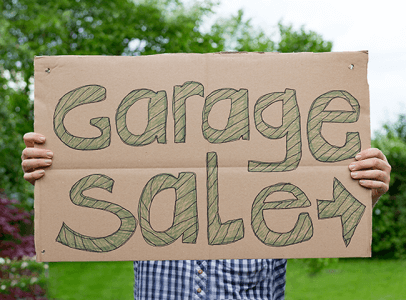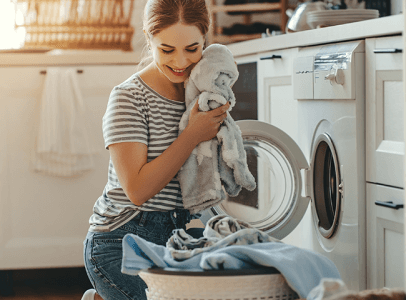How to Clean and Disinfect Home Gyms
We’re all trying to find ways to improve our well-being, both emotionally and physically — and staying active is an important component of both. Home gyms are a great way to stay healthy while gyms are closed. But whether you’re working out at home or at the gym, make sure you are working out in a safe and clean environment. It’s important to clean and disinfect your exercise equipment regularly.
How to clean weights and weight lifting equipment
If you’re using hand weights — or an entire weightlifting set — in your home gym, keeping this equipment clean entails regular maintenance. Whether they’re metal or covered with rubber, the sweat and oils from the skin, and the gripping, rubbing, and handling that comes from regular use, can make them susceptible to wear and tear, as well as a potential breeding ground for microbes and bacteria.
According to EquipmentGuys.com, a sports facilities installation company that specializes in high school and college gym installations, cleaning these items by mixing a few drops of dish soap with one gallon of water is best. First, moisten a clean cloth with the sudsy water and wipe the weight clean, then dry it well with a cloth to prevent rusting. “We suggest using a stiff plastic bristle brush with the soap/water mix to scrub the handles as well,” says Equipment Guys founder and CEO Matt Purdy. “Then, let it sit for a minute before wiping it clean with a dry cloth.”
If you’re getting ready to pump some iron in the gym, take a few minutes — and a few disinfecting wipes like Nice 'N CLEAN® Disinfecting Wipes — and wipe down the handles of the weights, making sure to leave them wet and shiny. Nice ’N CLEAN® Disinfecting Wipes are proven to kill 99.9% of bacteria** and viruses*, including the COVID-19 virusɸ in 3 minutes. Be sure to wipe down the bench, too!
How to clean yoga mats
When it comes to yoga mats, we’ll first tell you what not to do — do NOT put it in the washing machine unless it comes with clear instructions that say it’s safe to do so. Many yoga mats contain vinyl, plastic, and other substances that can easily scratch and stress your washer’s inner machinery. The mat could also melt if it gets too hot.
Instead, always wash your yoga mat at home by hand — and do it at least once every two yoga sessions. This will go a long way to ensuring you don’t find yourself battling a case of ringworm, athlete’s foot, or a staph or yeast infection from the bacteria that thrive in the dark, warm, moist environment of a yoga mat.
Here again, dishwashing soap — a few drops in a spray bottle filled with warm water — will help clean your mat, thanks to the chlorine and other common chemicals found in it. Use only a few drops, however, as too much dish soap can leave your mat slippery. Spray the mat liberally, then scrub it gently with a microfiber cloth to keep the stickiness of the mat intact. Be sure to clean both sides of the mat, then rinse it with clean (soap-free) warm water and allow it to air dry. Don’t wring it out, and don’t hang it outside in the sun because it could damage the rubber. Instead, allow it to hang over your shower curtain rod overnight or dry the surface with a towel, then sandwich it between two dry, clean towels for an hour or two to absorb all the excess moisture.
It’s not enough to only clean your yoga mat, though — you also need to disinfect it to make sure you kill all the germs lurking on it. This is especially important if you share your mat with a family member, or use a communal mat at a yoga center. If that’s the case, bring along your Nice 'N CLEAN® Disinfecting Wipes with your workout gear and wipe down both sides of the mat with the wipe, then hold it up by the corners until it air dries completely. Repeat the process if you feel it’s necessary. Trust your gut — and your nose — as a smelly mat is a sign of breeding bacteria.
How to clean stationary exercise equipment
Treadmills
If you’re using a treadmill as part of your home gym, you should clean it at least once a week, particularly if there are multiple users. According to LiveStrong.com, keeping your treadmill’s belt in good working order is as easy as these 4 steps:
-
First, unplug the treadmill before cleaning.
-
Next, dust the treadmill belt with a surface duster. This will remove buildup on, around, and underneath it.
-
Then, using a cloth slightly moistened with clean water, gently wipe down the belt, rotating it to clean all of it. Avoid using any kind of cleaning product on the belt unless recommended by the manufacturer.
-
Finally, using a dry paper towel, rotate the treadmill belt again to dry it thoroughly.
Don’t forget to wipe down the dashboard and any other outer surface you may have touched or sweated on. This can be done with a damp paper towel most of the time. However, once or twice a month, using a wipe like Nice 'N CLEAN® Disinfecting Wipes on the plastic and metal surfaces will help sanitize and disinfect them. Also use the surface wipe to gently clean the glass areas on the dashboard. If you see any streaking, follow up with a microfiber cloth.
Stationary bikes
If you use a stationary bike at home or in the gym, clean off all the hard, nonporous surfaces with a wet wipe like Nice 'N CLEAN® Disinfecting Wipes before or after each use. If you’re at home, we recommend cleaning after each use so it has time to air dry and will be ready to go the next day. At the gym, you’ll want to wipe down just before using since you don’t know whether the previous user cleaned it off after use.
If you’re tight on time, you can do a 30-second express clean with just two wet wipes.
ALSO READ: Peloton Bike Cleaning Tips
Elliptical machines
According to Home Gym Resource, when it comes to an elliptical trainer, a mild dishwashing detergent and clean water are best for removing sweat, dust, grime, and dirt. Avoid bleach and ammonia-based cleaners since they can harm the plastic components found on many elliptical machines.
-
After each workout, dampen a microfiber cloth and wipe down the machine, being careful not to let water drip into it. Concentrate on the handles and the console, as well as anywhere sweat may have accumulated.
-
Once a month, unplug the elliptical machine for a deep cleaning. Use a few drops of dishwashing detergent in a gallon of water to clean the machine more thoroughly. Dampen a clean microfiber cloth with the solution, taking care not to make it too wet or sudsy, and carefully wipe down the entire exterior of the machine, including the rollers and guide rails. Then, with a clean, dry cloth, dry off the machine thoroughly. Follow up by wiping the machine down with a wet wipe such as Nice 'N CLEAN® Disinfecting Wipes on the plastic and metal surfaces. Allow it to air dry before using again.
-
Every six months, unplug the machine and remove the plastic covers. Vacuum any visible debris without banging into any of the parts inside, and replace the covers.
Rowing machines
Similar to a stationary bike, wipe down the exterior of your rowing machine to remove sweat and grime after each workout. The pros at Home Gym Resource suggest wiping the machine down with a clean microfiber cloth dampened in a solution of dishwashing soap and warm water. Dry the machine completely with a clean, dry cloth afterward. Follow up by wiping the machine down with Nice ’N CLEAN® Disinfecting Wipes on the plastic and metal surfaces to sanitize and disinfect them.
Protect your health as well as your equipment
Your home gym is an investment in your health and well-being, so be sure to show your equipment the same TLC you show yourself. By cleaning and disinfecting them regularly with Nice ’N CLEAN® Wipes, you’ll ensure your equipment stays in good working order, and you’ll stay protected from germs that could cause infection or make you sick.
*Effective against common cold virus caused by Coronavirus and common flu virus caused by Influenza A H3N2 Virus
**Effective against Escherichia coli (E. coli), Salmonella enterica (Salmonella), Staphylococcus aureus (Staph), Pseudomonas aeruginosa, Listeria monocytogenes (Listeria), Streptococcus pyogenes (Strep), Methicillin-Resistant Staphylococcus aureus (MRSA)
ɸKills SARS-CoV-2 on hard, nonporous surfaces
References
- How to Maintain Weights and Dumbbells. EquipmentGuys.com.
- How to Clean a Treadmill Belt. LiveStrong.com.
- How To Clean Your Spinning Bike In 30 Seconds!
- The Full Guide To Elliptical Trainer Maintenance. Home Gym Resource.
- Rowing Machine Maintenance: How To Take Care Of Your Rower. Home Gym Resource.





